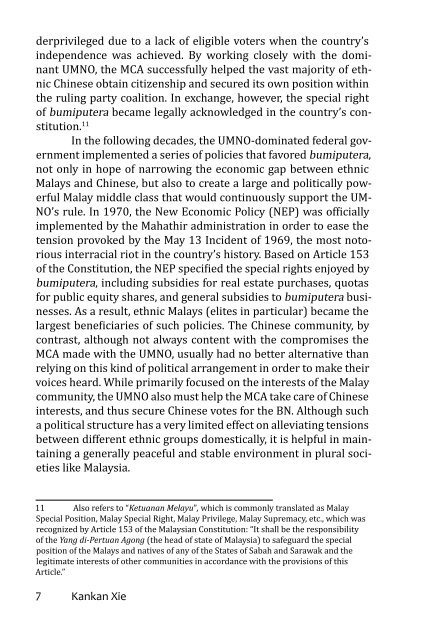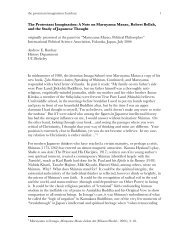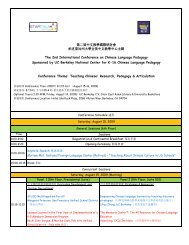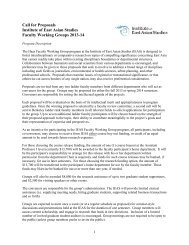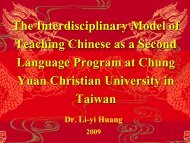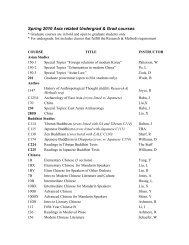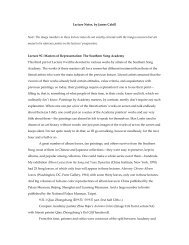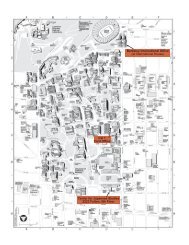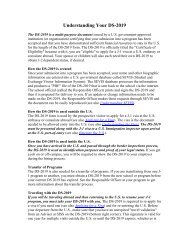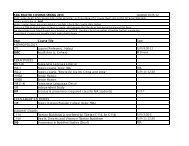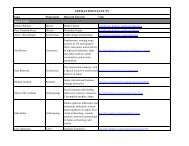Third Edition Spring 2013 - Institute of East Asian Studies, UC ...
Third Edition Spring 2013 - Institute of East Asian Studies, UC ...
Third Edition Spring 2013 - Institute of East Asian Studies, UC ...
You also want an ePaper? Increase the reach of your titles
YUMPU automatically turns print PDFs into web optimized ePapers that Google loves.
derprivileged due to a lack <strong>of</strong> eligible voters when the country’sindependence was achieved. By working closely with the dominantUMNO, the MCA successfully helped the vast majority <strong>of</strong> ethnicChinese obtain citizenship and secured its own position withinthe ruling party coalition. In exchange, however, the special right<strong>of</strong> bumiputera became legally acknowledged in the country’s constitution.11In the following decades, the UMNO-dominated federal governmentimplemented a series <strong>of</strong> policies that favored bumiputera,not only in hope <strong>of</strong> narrowing the economic gap between ethnicMalays and Chinese, but also to create a large and politically powerfulMalay middle class that would continuously support the UM-NO’s rule. In 1970, the New Economic Policy (NEP) was <strong>of</strong>ficiallyimplemented by the Mahathir administration in order to ease thetension provoked by the May 13 Incident <strong>of</strong> 1969, the most notoriousinterracial riot in the country’s history. Based on Article 153<strong>of</strong> the Constitution, the NEP specified the special rights enjoyed bybumiputera, including subsidies for real estate purchases, quotasfor public equity shares, and general subsidies to bumiputera businesses.As a result, ethnic Malays (elites in particular) became thelargest beneficiaries <strong>of</strong> such policies. The Chinese community, bycontrast, although not always content with the compromises theMCA made with the UMNO, usually had no better alternative thanrelying on this kind <strong>of</strong> political arrangement in order to make theirvoices heard. While primarily focused on the interests <strong>of</strong> the Malaycommunity, the UMNO also must help the MCA take care <strong>of</strong> Chineseinterests, and thus secure Chinese votes for the BN. Although sucha political structure has a very limited effect on alleviating tensionsbetween different ethnic groups domestically, it is helpful in maintaininga generally peaceful and stable environment in plural societieslike Malaysia.11 Also refers to “Ketuanan Melayu”, which is commonly translated as MalaySpecial Position, Malay Special Right, Malay Privilege, Malay Supremacy, etc., which wasrecognized by Article 153 <strong>of</strong> the Malaysian Constitution: “It shall be the responsibility<strong>of</strong> the Yang di-Pertuan Agong (the head <strong>of</strong> state <strong>of</strong> Malaysia) to safeguard the specialposition <strong>of</strong> the Malays and natives <strong>of</strong> any <strong>of</strong> the States <strong>of</strong> Sabah and Sarawak and thelegitimate interests <strong>of</strong> other communities in accordance with the provisions <strong>of</strong> thisArticle.”Malaysian Perceptions <strong>of</strong> ChinaBoth the Malaysian Chinese community and the Malaysiangovernment have played very important roles in improving theChina-Malaysia relationship, but their respective incentives arequite different. Beyond economic considerations, I believe that ethnicChinese in Malaysia have favorable perceptions <strong>of</strong> China largelydue to ethno-racial connections. In contrast, for the UMNO-controlledMalaysian government, in light <strong>of</strong> its major concern withmaintaining the status quo in Malaysian domestic politics, it seeksto make the Chinese community happy by maintaining friendlyties with China.To test this hypothesis, I conducted a survey <strong>of</strong> Malaysianperceptions <strong>of</strong> China in 2008. I collected data from 131 participantsfrom both Chinese and non-Chinese communities in Malaysiaand investigated their perceptions from three different angles,namely “China and Chinese,” “China-Malaysia Relationship,” and“Culture and Communication” (Table 1).Table 1Responses Frequency PercentageEthnicity Chinese 63 48.1%Non-Chinese 68 51.9%Age 15-24 105 80.2%24+ 26 19.8%Gender Male 44 33.6%Female 87 66.4%Student 102 77.9%OccupationBusinessmen 8 6.1%Staff 14 10.7%Farmer 5 3.8%Worker 2 1.5%7 Kankan Xie Ethnicity And China-Malaysia Relations 8


